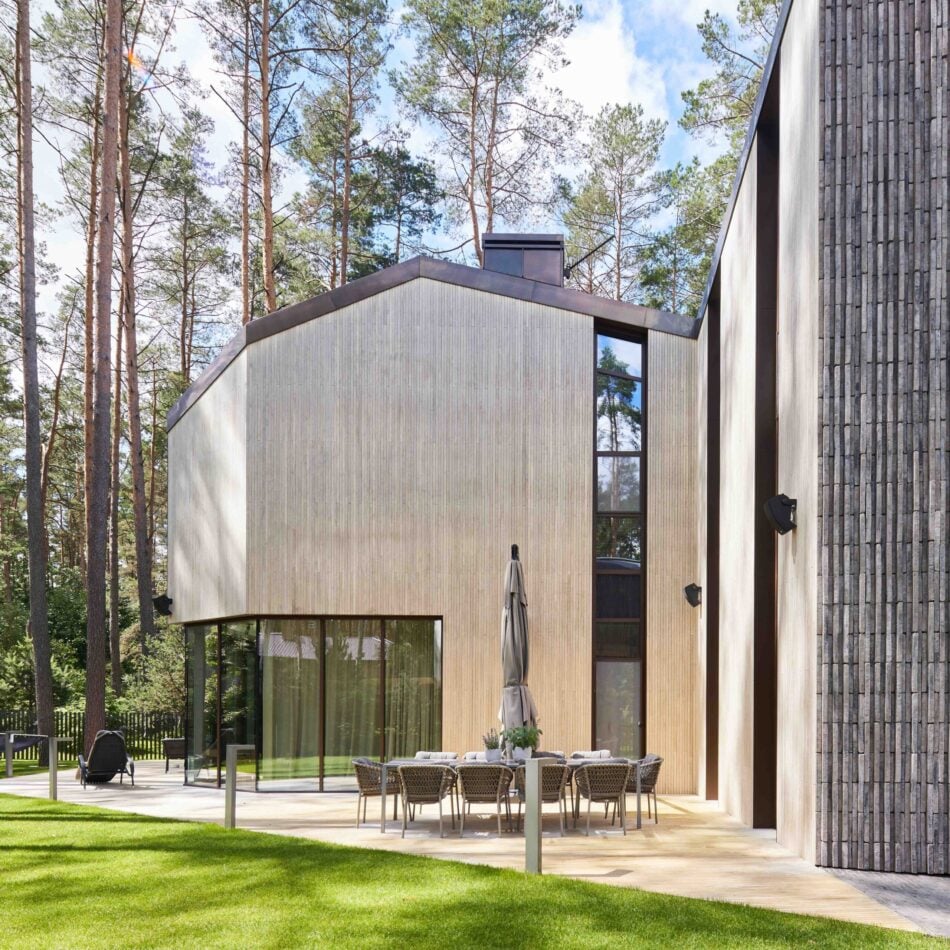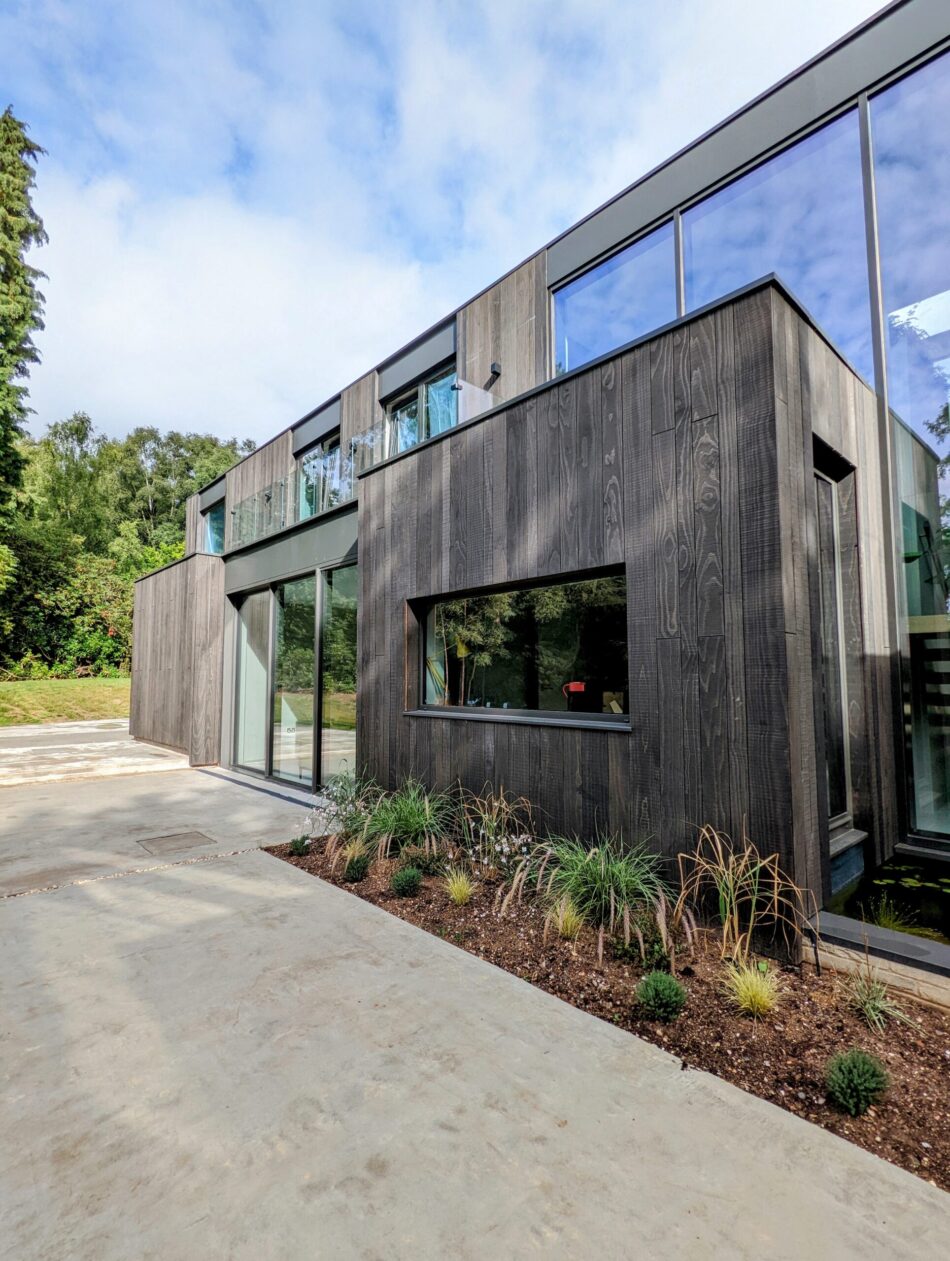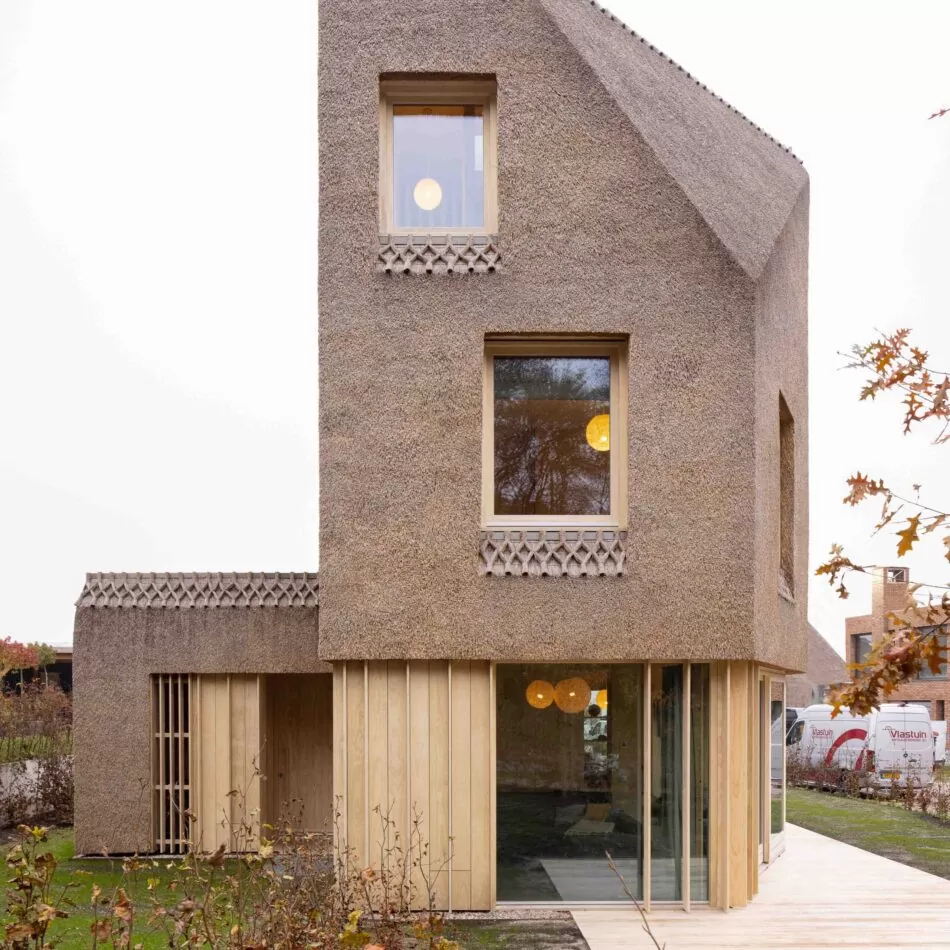
Why wood is the most sustainable building material
21.03.2023
2 much CO2
With global warming being an ongoing issue, materials such as steel and concrete just won’t do, combined they produce around 2,000 metric tonnes of CO2 emissions by matching this in carbon storage1. This is where wood comes in as a fantastic alternative to traditional building materials as rather than producing carbon it absorbs the CO2 in the atmosphere.
The Timber Trade Federation part of Timber Development UK claims that every year around 39 billion tonnes of CO2 are released into the atmosphere as a result of everyday human activity. As a result of the vast amount of CO2 being released into the atmosphere, global warming is becoming a never-ending issue that must be dealt with.

How is wood sustainable? Fighting climate change by building with wood
Trees are incredibly valuable as they help absorb CO2 that is released into the atmosphere, which is currently the only viable method to capture and store carbon. They even go so far as to keep the carbon absorbed even once they are cut down and processed into wood.
Eventually, they are used for anything from the frame of a building to a front door or kitchen unit. Once the wood reaches the end of its natural use, provided it’s recycled into another lifelong product, the carbon remains stored within the structure it has morphed into.
Forests cover around 4 billion hectares, or 30 percent of Earth’s land surface, and currently absorb 2.5 billion tonnes of carbon dioxide per year2. Planting trees in areas that were historically covered, also known as reforestation, is one of the most potent climate mitigation strategies.
Studies have shown that, even when excluding existing trees and agricultural and urban areas, there are 1.7 billion hectares of treeless land on which 1.2 trillion native tree saplings would naturally grow. The absorption and storage of 205 gigatonnes of carbon by this forest cover would help restore ecosystems.
This scale of reforestation would be a vast step in the direction of reducing emissions resulting from human activities—up to two thirds of all emissions!
The timber industry can reduce the rate of deforestation by ensuring that illegal timber does not enter the market through responsible sourcing and helping countries around the world improve their forestry practices.

Wood is the only truly sustainable and renewable building material
Not only does timber construction benefit the environment by cutting down carbon emissions, but it is also creating demand for wood from sustainable, well-managed forests, thereby paying for management that reduces the likelihood of forest fires and provides habitat for wildlife.
In order to encourage a future where more renewable, natural materials, including timber, take the place of finite, energy-intensive materials. Wood is a fantastic material to fill this void, and according to innovators and scientists, wood alternatives are the secret to a more renewable world.
Almost one tonne of carbon dioxide is absorbed for every cubic metre of timber used in construction. Timber has the lowest embodied carbon of any construction material, which has led to architects and specifiers pledging to use more sustainable timber, bringing us one step closer to achieving climate change.
An example of this innovation is engineered timber, which has become a phenomenon around the world. This is because it negates the reasoning behind why you maybe wouldn’t use wood as a building alternative, such as not being as strong or as durable.

Accoya is the future of wood innovation
Accoya is a brilliant example of high performance sustainable manufactured wood that has been widely used across the world as a result of its performance, durability, finish, and, of course, outstanding sustainability credentials. Accoya’s sourcing all starts from FSC® certified forests, that must prove they are managed in an environmentally appropriate, socially beneficial, and economically viable manner. These forests are a natural, renewable solution for global environmental problems such as climate change, ecosystem destruction, and landscape deterioration caused by increasing consumption. Besides forming a natural ecological habitat, forests are actually an important carbon sink by filtering CO2 out of the air and absorbing this in the biomass of the tree.
When it comes to real-life applications for Accoya, this is where the brand product really stands apart from the competition. Due to its improved properties, such as increased durability, improved thermal insulation, and a longer coating life as a result of increased dimensional stability, Accoya wood provides several environmental gains during its use phase. The planned service life of Accoya has been independently assessed to be between 77 and 90 years, which marks it out as superior to not only other timbers but also PVC and aluminium when used in applications such as windows. Proof that sustainability and performance can work together.
WHERE TO BUY ACCOYA
for your next projectWhat type of Product are you interested in?
- - Select product type -
-
FIND A SUPPLIER
FIND A INSTALLER
for your next projectWhat type of are you interested in? (optional)
How will your be used?
- - Select type -
-
You are currently on the Accoya site
Would you like to visit the Accoya Site to view all relevant content for your location?